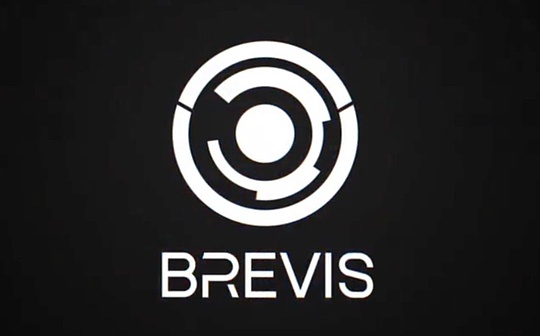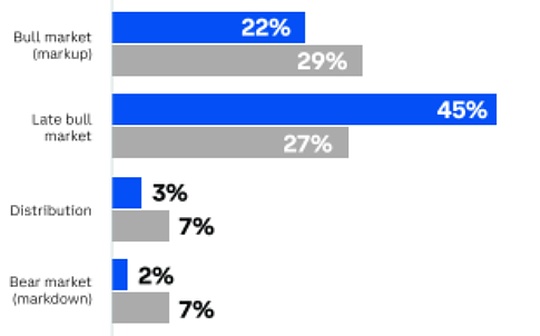
Author: Blue Fox Notes; Source: X, @lanhubiji
Seeing vitalik mention Brevis, it seems that it attaches great importance to L1 expansion.In the Ethereum roadmap, there is a concept: “off-chain computing and on-chain verification” model. Eigenlayer, Succinct and Zksync have similar ideas, indicating that there is a consensus in the industry that if you want to truly decentralize L1 expansion, you can take advantage of off-chain advantages; Brevis has only used this model, so, how is Brevis different?
First, let’s briefly understand what is the “off-chain calculation and on-chain verification” model?In order for more ordinary users to understand, a simplified metaphor can be used. “Off-chain calculation and on-chain verification” can be seen as “condensing” off-chain facts (calculation results or data) into a concise proof or summary, and then verifying it on the chain.To a certain extent, its idea is similar to L2 Rollup at an abstract level. L2 Rollup packages and condenses multiple transactions into a batch and submits them to L1 for verification and execution. Although the specific mechanism is different, it is helpful to understand Brevis’s ZkVM design philosophy: “condensation and verification.”Through mathematics, a large amount of off-chain computing work is compressed into small pieces of information, enabling efficient processing on expensive and low-throughput chains, thereby solving the blockchain scalability problem.
The core mechanism of Brevis is to perform efficient calculations off-chain, generate ZK proofs, and then complete verification on-chain quickly and at low cost without re-executing the entire complex calculation.This is not new, what makes Brevis different is:
A combination of general purpose and specialized optimization
Brevis’s technology stack is a modular design, in which Pico zkVM is its universal verifiable calculation engine, supporting ZK proof generation for any calculation.Developers write code in Rust without ZK expertise. The platform automatically handles proof generation, lowering the threshold for developers to build complex encryption applications (the technology abstracts ZK complexity and allows developers to build applications just like writing ordinary code).Its modular architecture supports the addition of specific co-processors. In addition to general settlement, it can also be optimized for complex calculations in specific scenarios to achieve more targeted improvements.
It has a built-in protocol processor called ZK Data Coprocessor, which is designed for blockchain historical data analysis and can solve the “amnesia” problem of smart contracts (the inability to access historical data cheaply).it’s in
Retrieve and analyze data off-chain, provide results and proofs, and ensure data existence and calculation accuracy.For example, pancakeswap can use Brevis hooks to achieve fee discounts based on user transaction volume; uniswap uses Brevis for gas refunds.They realize complex functions through zK Data Coprocessor while saving a lot of costs.
Provide “accelerator” for Ethereum L1
Pico Prism is one of the key technologies of Brevis. It has made breakthroughs in multi-server GPU clusters and supports “real-time proof” of Ethereum L1.This “real-time proof” can be understood as each block (one page of transaction records) in Ethereum L1, which can be cryptographically “stamped” to confirm its accuracy within a few seconds. You don’t have to recalculate it to verify whether it is reliable.
According to the current Ethereum Foundation real-time proof framework benchmark, for the current L1 block with 45M gas limit, 99.6% coverage (<12 seconds of proof) and 96.8% real-time coverage (<10 seconds) are achieved; the average proof time is 6.04 seconds for 36M gas blocks and 6.9 seconds for 45M gas blocks; the hardware is 64 RTX 5090 GPUs and costs $128K.
The above data looks very professional, but for ordinary users, these data may not be relevant.
For easy understanding, the analogy can be simplified as Pico Prism installing an accelerator for Ethereum L1.In the past, Ethereum required all nodes to recalculate each block when processing each block. Through technology such as Pico Prism, it means that it can “condensate” (quickly generate a proof, super-compressed summary), allowing the network to verify in just a few seconds, without the need for repeated calculations by each node.In other words, this means that Ethereum L1 will become faster, cheaper, more efficient, and can handle more complex implementations without sacrificing decentralization and security.If the previous Ethereum was similar to an old-fashioned bicycle, with Brevis’ Pico Prism technology, Ethereum has been upgraded to become a car.
This acceleration effect can unlock more scenarios, such as real-time AI-driven DeFi lending, on-chain games, anonymous voting, etc.
DeFi scenario: The previous smart contracts on Ethereum L1 could only borrow money based on the balance, and could not analyze the user’s stability based on the user’s historical transaction data (because massive historical data analysis could not be done). With this accelerator, L1 can be supported to analyze massive historical data in real time (proof of a few seconds), thereby building an “AI lending robot”.The contract calculates a credit score based on the user’s DeFi transaction history and gives a personalized interest rate.In addition, for high-frequency scenarios, such as flash loans, borrowing/investing/repaying money are all completed in one block, and AI optimizes the path in real time to avoid “slippage” losses.Similar to decentralized Robinhood.There can also be high-frequency auctions, where hundreds or thousands of bids can be completed per minute.
On-chain games: Previously, L1 wanted to build a multiplayer game (such as Axie Infinity on the chain), but block confirmation took 12 seconds, players were stuck, and fees soared; Pico Prism supports “simulated real-time” games, and off-chain servers calculate damage and other values, and use ZK proof to settle the settlement to L1 in each round, simulating “real-time” games to achieve a better gaming experience.
Anonymous on-chain voting scenario: Currently, L1 voting is transparent, easy to be tracked or manipulated, and complex statistics are costly and slow.Through Pico Prism to realize “zero-knowledge privacy computing”, L1 can run high-frequency privacy applications, which can realize high-frequency anonymous voting in DAO governance and produce results in real time.
What the above scenario means for Ethereum is that it can unlock more DeFi and other application scenarios, bring more assets to L1, bring more transactions and liquidity, and greater activity.
As for what scenarios can be run in the future, it still needs to be tested in specific practice.
Gradually implemented
According to public information, Brevis is being gradually deployed, with 147.5 million ZK certificates generated; more than 190,000 independent users; supporting 5 blockchains; more than 20 major partners (such as Metamask, Linea, etc.), and is currently integrated into already running applications, such as through Brevis technology, Incentra Platform issues annual rewards; PancakeSwap implements discounts based on transaction volume and other data; Linea distributes 1 billion LINEA based on user contributionsTokens etc.








